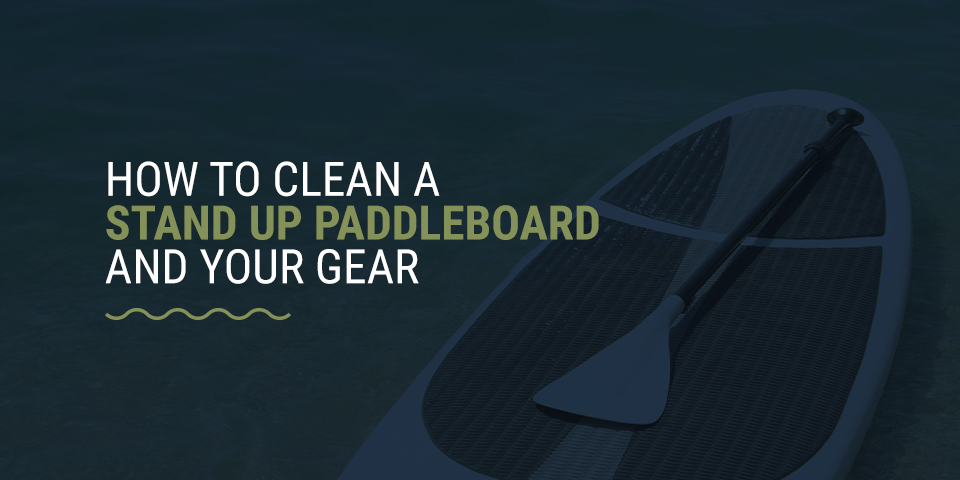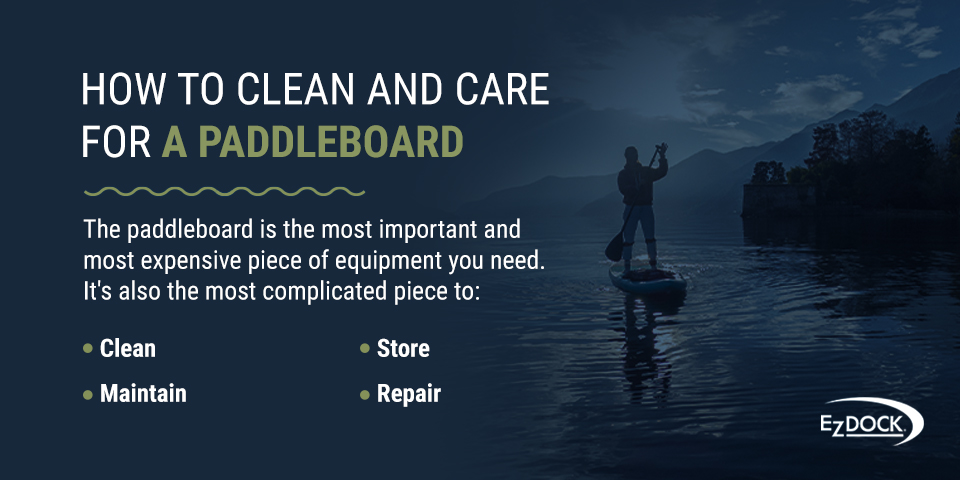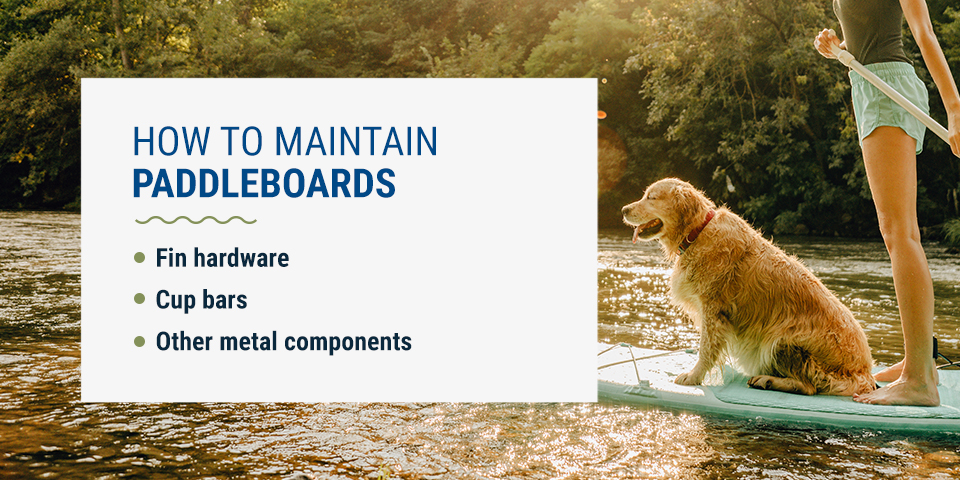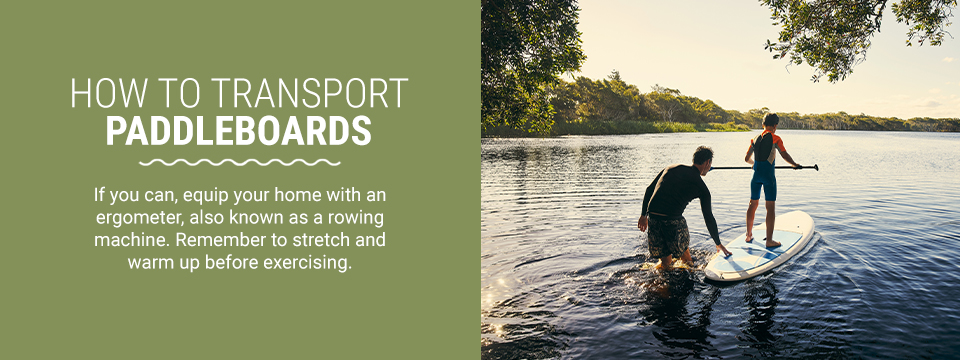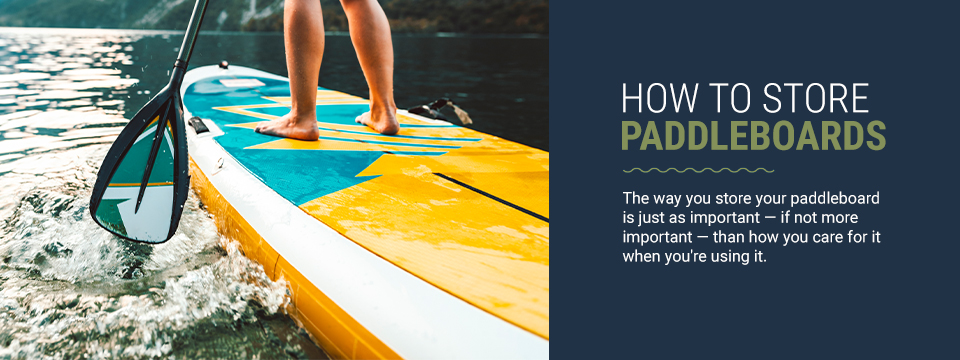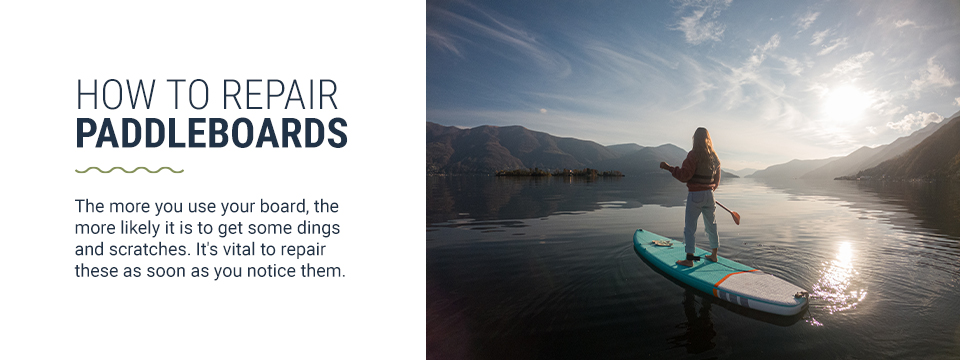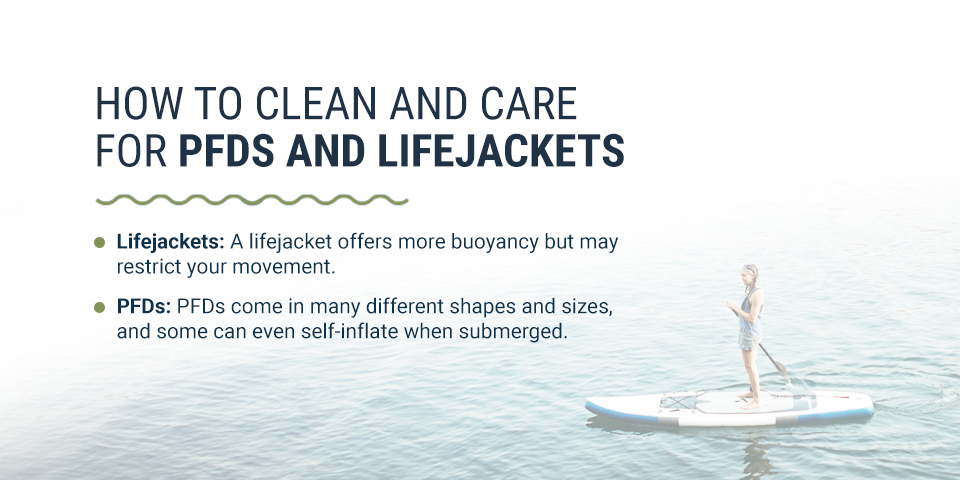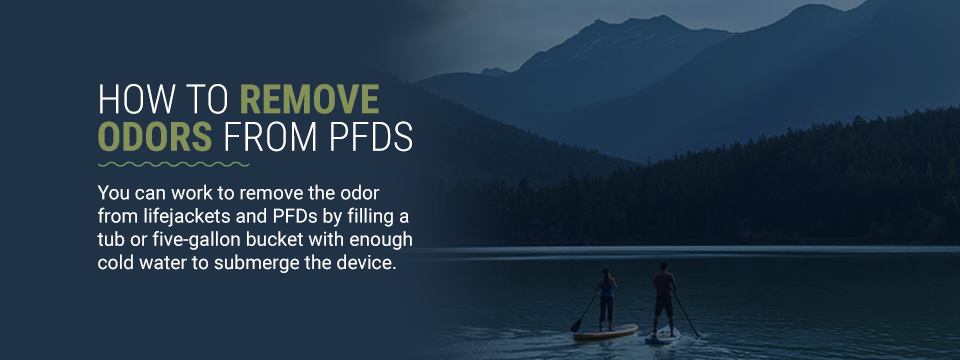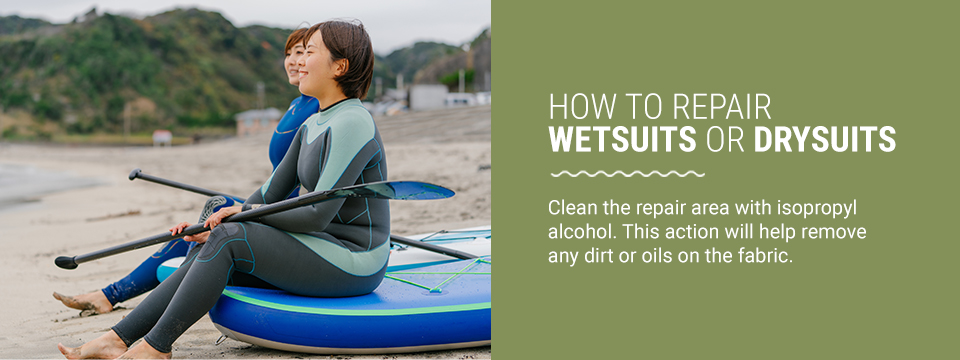Filters
How to Clean a Stand Up Paddleboard and Your Gear
Paddleboarding is a great way to exercise and enjoy the water.
If you paddleboard, you know you need a lot of equipment, like the following:
- Paddleboard
- Paddles
- PFDs or lifejackets
- Wetsuit or drysuit
- Equipment storage
Your stand-up paddleboard and all your equipment are a significant investment.
If you learn how to care for a stand-up paddleboard and then commit to caring for your paddleboard regularly, it can last a lifetime. You should also do the same when it comes to the rest of your gear so you get as much out of it as you can. In this guide, you can learn how to do both.
Read the full article or skip to a specific section:
- How to Clean and Care for a Paddleboard
- How to Clean and Care for Paddles
- How to Clean and Care for PFDs and Lifejackets
- How to Clean and Care for Wetsuits and Drysuits
- How to Clean and Care for Water Shoes
- Spend More Time on the Water with EZ Dock
How to Clean and Care for a Paddleboard
The paddleboard is the most important and most expensive piece of equipment you need.
It’s also the most complicated piece to:
- Clean
- Maintain
- Store
- Repair
Investing in a higher quality board may mean you don’t have to do quite as much stand-up paddle board maintenance, but there are steps you should always take to extend its life. Failing to care for your paddleboard properly could pose dangers to you, especially if you miss some damage and then take your paddleboard out on the water.
Follow these tips if you’d rather avoid the cost it would take to replace your stand-up paddleboard:
How to Clean Paddleboards
The most important step for cleaning a paddleboard is also the easiest!
After every use, rinse the board off with fresh water. This step helps remove dirt, debris and salt from the board. You must do this step after every use. Dirt and salt can slowly eat away at the plastic and epoxy parts of your board, in addition to encouraging mold and mildew growth.
Make sure to clean in all the crevices and around any metal components when washing off your stand-up paddleboard.
Next, you should clean the board with a mild detergent, though you don’t have to do so after every use.
A product like Revivex Pro Cleaner is a great choice for cleaning a paddleboard. It even helps prevent bacteria and mildew from growing on the board.
You can get started with Revivex Pro Cleaner by mixing half an ounce of Pro Cleaner with one and a half gallons of cold water. Next, carefully clean the whole board with a soft cloth. Don’t use anything rough or abrasive, as you could end up damaging the board or deck pad.
If you don’t have this kind of cleaner but need to clean your board, you can use a solution of mild soap or dishwashing liquid mixed with warm water. If your board has an odor, you can also use a mixture of Simple Green and water to clean the board. Don’t use an abrasive cleaner.
If you have an inflatable board, you might need to take an extra step. Any scuff marks not removed with the soft cloth can usually get removed with a Mr. Clean Magic Eraser. Be careful cleaning the deck pad since it’s more fragile than the rest of the board.
Rinse your board with clean water. Make sure you didn’t miss any crevices, including the fin boxes, screws and around the deck pad.
Lastly, allow the board to completely dry. If you’re drying your paddleboard outside, leave it in the shade instead of the sun since UV rays will damage your board over time.
How to Maintain Paddleboards
Other than regularly cleaning your paddleboard, there are some other steps you must take to maintain it.
Every year or two, take some oil like WD-40 to lubricate the metal pieces of your board, including the:
- Fin hardware
- Cup bars
- Other metal components
While all the metal on your board should be marine-grade, applying oil every once in a while will ensure everything will work well for a long time.
Your paddleboard can get damaged by prolonged exposure to sunlight. Every year, you can use UV Protectant spray on your board to help resist the effects of UV exposure. Make sure the board is completely dry before applying a small amount.
Another part of paddleboard maintenance is how you use the board.
Don’t try to ride in shallow waters, and avoid any rocks or obstacles that could damage your board. Use a paddleboard leash to make sure your board doesn’t go too far if you happen to fall off. Your board could end up dinged and damaged — you could even lose it.
Out of the water, carry the board with care and don’t let it come in contact with any hard surfaces, like asphalt. Never set your board down on a rough surface.
After every use, inspect the entire board for damage, scratches or dings.
How to Transport Paddleboards
When you’re done in the water, you’re going to need to clean your board and then bring the board back home safely. After you rinse your board, you’ll probably need somewhere to set the board while you pack it up. You may need a SUP landing mat or an oversized towel that will keep your board off the sand and dirt.
It’s incredibly important to strap your board to the roof of your car carefully. If the board falls off, it will likely get damaged while also posing a severe hazard to other drivers on the road.
A great way to help protect your board during transport is to use a paddleboard storage bag. However, it’s important not to store a damp or wet board in a bag.
After you clean the board, you probably won’t have the option to wait a full 24 hours for the board to completely dry before taking it home. So instead, dry the board with a towel as best you can.
If your storage bag has vents or you can partially open it without compromising anyone’s safety, that will allow some of the water to escape if you have a long drive. Once you get home, take the board back out of the bag so it can dry completely before being stored. Any overlooked moisture will encourage mold and mildew growth.
How to Store Paddleboards
The way you store your paddleboard is just as important — if not more important — than how you care for it when you’re using it. The chances are that your board will spend more time in storage more than in the water.
First, clean the board with the steps listed above. Then allow it to dry for 24 hours.
Next, remove the fins from the board and open any air vents or plugs.
A board bag is a great investment for protecting your paddleboard. If you’ll store it for long periods, you can pack it with moisture-absorbing packs to make sure the board stays completely dry. If the board remains wet, the moisture could weaken the seams and promote bacteria growth.
Remember to always store your board out of direct sunlight. If you have to put your board down for a minute in the sun, turn it so the deck pad is facing the ground. Make sure nothing sharp that could damage the pad is nearby.
Store your board and its bag in a cool, dry place like a garage. If you have to store your paddleboard on a hard surface, consider using a padded bag or putting padding down where you want to store your paddleboard.
How to Repair Paddleboards
The more you use your board, the more likely it is to get some dings and scratches. It’s vital to repair these as soon as you notice them. If you can see the foam core, do not put the board in the water.
If it’s minor damage, you may be able to fix it with a tape patch.
First, clean the area with mild soap and water.
If wax is present, use isopropyl alcohol to remove it. Dry the board and allow it to airdry overnight. Apply a clear patch tape to the area. Tenacious Tape Flex Patches or something similar will seal any minor dings or cracks. Don’t use the board for at least 24 hours.
For punctures or deep cracks, you can seal them with epoxy resin.
First, you’ll need a smooth hole.
If it’s not smooth, use a utility knife to cut out the damaged or loose fiberglass. Then fill in the hole with an epoxy resin like Solarez. Try to even out the epoxy and then leave it in direct sunlight to harden. Read the instructions for how long to leave it in the sun and try not to leave it out for longer. After it dries, use sandpaper to smooth the resin out.
If you’re using an inflatable board with a leak, you’ll need a repair kit.
Deflate the board and clean the area thoroughly.
Let it dry, and then apply the glue from the kit. Wait 20 minutes and then apply it again.
After another 20 minutes, apply a third layer.
Then, apply some glue to the PVC patch and apply the patch to the leak. Press it down for at least two minutes and wipe away any glue that comes out. Apply something heavy to keep it pressed down while the glue dries completely.
Wait at least 24 hours before inflating the board again.
If your deck pad is coming loose, all you need to do is glue it back down. Take some glue or something like Aquaseal and apply it liberally to the area. Make sure the pad stays pressed down for at least 24 hours.
For severe damage you can’t fix, see a professional. A damaged board is dangerous to use, so when in doubt, ask someone.
How to Clean and Care for Paddles
Paddles don’t require a lot of maintenance but you still need to clean them and store them with care. Of course, be careful not to damage the blades while you’re using them.
How to Clean Paddles
Just like your board, you need to rinse your paddles after every use.
You can use a soft cloth to rub away any stubborn dirt or grime. Rinsing your paddles after every use is the best way to protect them, but you should also deep clean them at the end of the season.
Spray them down with a mild cleaner like a mixture of dishwashing liquid and water. Wipe down every part of the board and make sure to get into any crevices. Then rinse them with fresh water again. Allow them to dry for 24 hours before storing them completely.
How to Store Paddles
Never leave your paddles in direct sunlight.
Store them in a paddle bag in the same place as your board. However, make sure they are dry.
If your paddles are wet, set them somewhere cool to dry and out of direct sunlight.
Avoid storing your paddles standing up to eliminate the chances of them falling and getting damaged.
How to Clean and Care for PFDs and Lifejackets
You should wear a personal flotation device (PFD) or lifejacket every time you go out on the water.
Whether you choose a PFD or lifejacket depends on your personal preferences and your confidence as a swimmer.
- Lifejackets: A lifejacket offers more buoyancy but may restrict your movement.
- PFDs: PFDs come in many different shapes and sizes, and some can even self-inflate when submerged.
Remember to test whichever one you use at the beginning of the season to check for any damage before heading out on the water. Equip your PFD or lifejacket with an emergency whistle and add a strip or two of reflective tape for safety.
How to Clean PFDs
Never machine wash or dry a lifejacket or PFD.
Rinse the PFD or lifejacket with clean water after each use. You’ll also want to avoid crushing the PFD or lifejacket.
Every so often, you should make a mixture of three gallons of water and one ounce of a detergent like Revivex Pro Cleaner. Do not use any detergent that isn’t clean-rinsing. If you have really dirty spots, apply the cleaner directly with a soft-bristled brush.
You can then submerge the entire device into the bucket. Use a soft sponge to clean the rest of the PFD or lifejacket, including the straps. Then rinse it again and allow it to air dry. However, do not let it dry in direct sunlight.
You can also clean your PFD or lifejacket with Simple Green Marine All-Purpose Boat Cleaner if you’re in a hurry. Wet the lifejacket or PFD and then spray it with the cleaner. Then scrub with a soft-bristled brush. Rinse your lifejacket or PDF, and then allow it to dry before storing it.
How to Remove Odors From PFDs
If you don’t clean your PFD or lifejacket often enough, it will begin to smell bad.
You can work to remove the odor from lifejackets and PFDs by filling a tub or five-gallon bucket with enough cold water to submerge the device. Add a clean-rinsing odor eliminator that is microbe-based and then stir.
Let it sit for 5-10 minutes, and then allow it to air dry. Don’t rinse it or expose it to heat.
How to Store PFDs
Store your dry PFD or lifejacket out of direct sunlight. Make sure not to store anything on top of it, as any pressure could damage its integrity. After removing the PFD from storage, always check the buoyancy.
How to Clean and Care for Wetsuits and Drysuits
Wetsuits and drysuits are good options for when you’re using your paddleboard, especially in colder weather.
Wetsuits, which are typically made out of neoprene, contain bubbles of nitrogen. These bubbles absorb the warmth from your body and help keep you warm. Wetsuits still allow water to enter.
Drysuits keep you completely dry, so you wear insulating clothes under them to help you stay warm.
How to Clean Wetsuits or Drysuits
You should rinse your wetsuit or drysuit after each use. Despite the differences, you can clean a wetsuit and drysuit the same way. However, never put your wetsuit or drysuit in the washer or dryer.
First, you’ll need a tub or large container big enough to submerge the suit in water. You’ll also need a wetsuit and drysuit shampoo. Don’t use regular laundry detergent.
Follow the instructions on the shampoo to add the right amount to the water. Let the suit soak for about 10 minutes. Then, use your hands to wash the fabric in the water.
If you see any heavily soiled areas, apply the shampoo directly on them and rub with a soft cloth. Then, rinse the suit well in freshwater. Hang the suit to air dry.
Once the outside part is dry, you’ll have to flip it inside out for the other side to dry. Then, you can use a UV protectant on your suit to protect it from damage and fading.
How to Remove Odors From Wetsuits or Drysuits
If you need to remove odors from your wetsuit or drysuit, you’ll need to take some extra steps.
After rinsing the clean suit in freshwater, rinse the bucket or tub you used and fill it up with clean water again. Then, you’ll want to add an odor eliminator such as Revivex Odor Eliminator. Afterward, submerge the suit and stir to mix.
Let it soak for about five minutes.
Then, take out the suit and do not rinse it — simply allow it to air dry completely out of direct sunlight and away from heat.
How to Repair Wetsuits or Drysuits
If you accidentally damage your wetsuit or drysuit, you’ll need to repair the rip, tear or hole.
Clean the repair area with isopropyl alcohol. This action will help remove any dirt or oils on the fabric.
Apply removable tape to the back of the area to be repaired to prevent the adhesive from leaking out — something like Scotch tape should work.
You’ll then need a repair adhesive like Aquaseal FD repair adhesive. Afterward, allow it to cure and harden while flat and untouched for at least 12 hours.
How to Store Wetsuits or Drysuits
As with all your equipment, you’ll need to store your wetsuit or drysuit in a cool, dry place away from any direct sunlight. Hanging it is the best option. You can use a wetsuit hanger or a padded dress hanger.
How to Clean and Care for Water Shoes
Water shoes are an often overlooked piece of equipment. They protect your feet and provide traction so you don’t fall off your board.
How to Clean Water Shoes
First, fill a sink or bucket with clean, warm water. Add a tablespoon of dish soap and a half cup of baking soda. Then put some more baking soda on a damp sponge and scrub the shoes. Let the shoes soak for about 30 minutes. Then rinse the shoes with warm water. Dry the shoes as best you can and also allow them to air dry.
Spend More Time on the Water With EZ Dock
If you want to use your equipment safely for as long as possible, you’ll need to take good care of it. Always rinse your equipment after you use it.
Your equipment includes your:
- Paddleboard
- Paddles
- Lifejackets
- PFDs
- Wetsuit
- Drysuit
Remember to use the proper cleaners on each item. Using the wrong cleaner could cause more problems, so always stay away from abrasive cleaners. Make sure your equipment is completely dry before storing them.
Store your equipment in a cool, dry place that gets no direct sunlight.
If you want easy access to the water, you need a high-quality dock. EZ Dock modular floating docks are low-maintenance, durable and slip-resistant.
Our docks will not rot, splinter or require paint. That means you’ll be able to spend more time paddleboarding instead of maintaining your dock. Consider a low-profile dock that is closer to the water. This kind of dock will make it much easier to get on and off your paddleboard.
Learn more about our products or contact us today to find the best option for your waterfront property.

